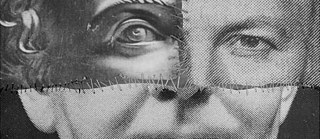Film Screening
Art and Power: Durer’s Heirs

Lutz Dammbeck at the interface between art and film
What happens to culture after the breakdown of the state? With the collapse of East Germany in 1990 and subsequent German reunification, the country found itself confronted with a re-assessment of GDR art. Opinion was polarized: on the one hand, artistic production without the ideological support of the socialist state suddenly appeared to be highly suspicious, on the other hand, the artistic heritage remained particularly aesthetically valuable: not least for the afterlife on socialism in Germany. Nobel Prize laureate Günther Grass, for example, called these paintings “more German” than the art produced in West Germany after 1945. To this day, painters from the tradition of the East German Leipzig School, like Neo Rauch, continue to be highly-prized internationally.
In the second part of Art and Power, Dürer’s Heirs (1996), Dammbeck talks to former state-sponsored painters like Werner Tübke and Bernhard Heisig, Rauch’s teachers, alongside unique footage from East and West Germany between 1945-1961. By returning to this interstitial moment, he raises the question of how artistic history, memory, and value are created and transformed by the state.
Location: 353 Interactive Cinema Space, Arts West Building 148 Royal Parade, Parkville VIC 3052
Four screenings of Lutz Dammbeck’s documentary tetralogy Art and Power, curated by Giles Simon Fielke and Nicolas Hausdorf, in cooperation with the Goethe-Institut and the University of Melbourne.
Event series: Art and Power
Details
Macquarie University
Arts Precinct
Language: German with English subtitles
Price: Free
Part of series Art and Power